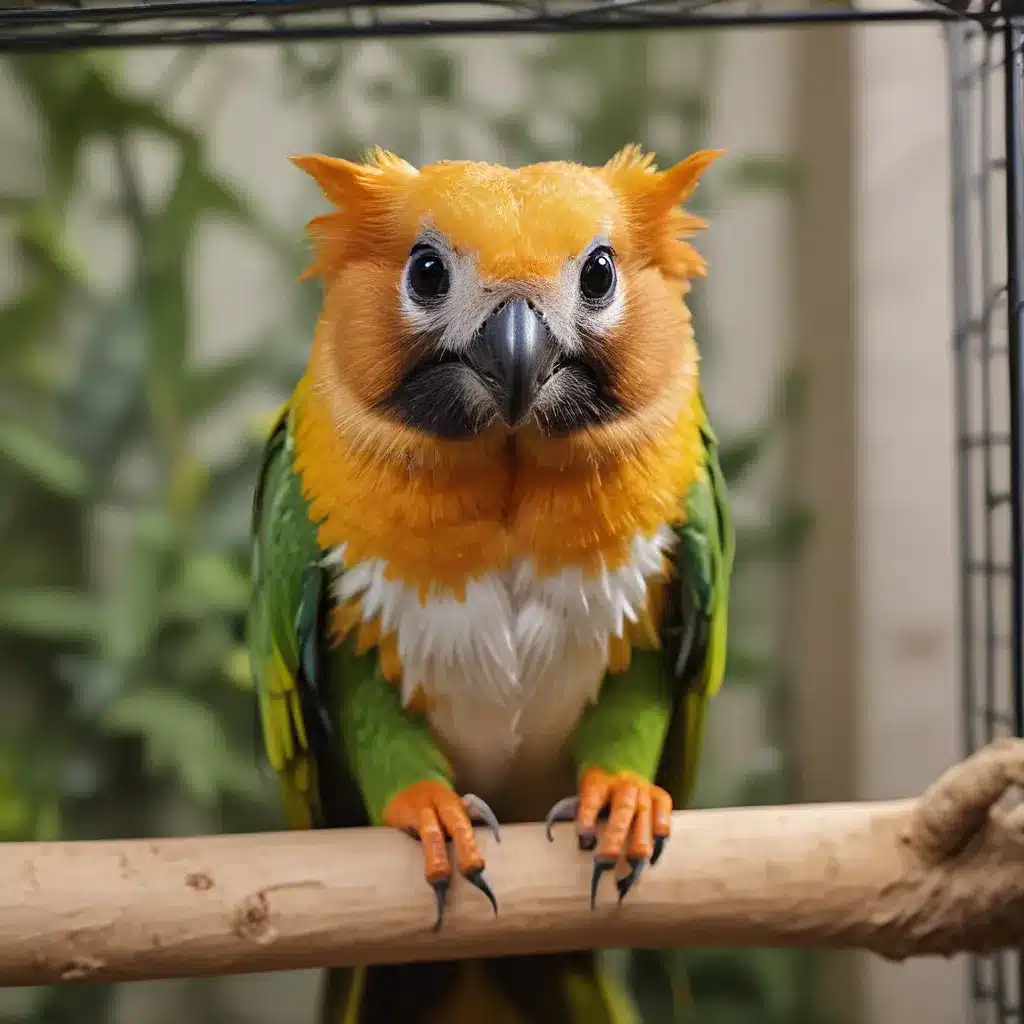
Bringing the Wild Into Your Living Room
Imagine sitting on your couch all day, every day, with no windows, no visitors, and no access to entertainment or mental stimulation. Sounds pretty bleak, doesn’t it? Well, that’s the reality for many exotic pets in homes across the world. But it doesn’t have to be that way!
As the proud owner of a menagerie of fascinating creatures from Golden Exotic Pets, I’ve learned that environmental enrichment is the key to keeping my furry, feathered, and scaly friends happy, healthy, and stimulated. And trust me, it’s not just good for them – it’s good for you too!
The Importance of Enrichment
You see, all animals – whether they live in the wild or in captivity – have an innate need for mental and physical stimulation. Without it, they can quickly become bored, frustrated, and even develop behavioral issues. And that’s not just a problem for zoos and shelters; it applies to our beloved pets at home as well.
As I learned during my decade as an Enrichment Coordinator at the Audubon Zoo, enrichment is vital for the well-being of every single species on the planet – from the mighty jaguar to the humble hedgehog. It’s about providing them with opportunities to engage in natural behaviors, make choices, and have some control over their environment.
Think about it this way: if you were stuck in a blank room with no windows, no entertainment, and the same food every day, how long do you think it would take before you started going stir-crazy? Probably not very long! The same goes for our animal companions.
Enrichment in Action
So, what does enrichment actually look like in practice? Well, the Conscious Companion blog has a great example that really brings the concept to life. Imagine a captive otter at the zoo, happily playing with a Boomer Ball underwater. That, my friends, is enrichment in action.
The key elements at play here are Choice, Change, and Complexity. By providing the otter with a novel object (the ball) and allowing it to interact with it in its own way, we’re giving the animal a sense of control and the opportunity to engage in natural behaviors like foraging and problem-solving.
And it’s not just otters that benefit from this kind of enrichment. As the Wild Enrichment team explains, “Enrichment should be random, interesting, and novel” for all animals, whether they’re living in a zoo or in your living room.
Bringing Enrichment Home
So, how can you apply these principles of environmental enrichment to your own exotic pets? Well, the good news is that it’s actually pretty simple and, more importantly, it doesn’t have to break the bank.
One of the key things I learned at the Audubon Zoo is that funds for enrichment were often limited, which meant we had to get creative. That’s a lesson I’ve carried over to my own home, and it’s one I share with all my clients at Golden Exotic Pets.
The truth is, you can make enrichment toys out of almost anything. It’s all about understanding your pet’s natural behaviors and then finding ways to stimulate them. For example, if you have a dog, you can hide treats in a cardboard box or stuff a Kong toy with peanut butter to encourage their natural foraging instincts.
And it’s not just dogs! Cats, birds, rodents, and even reptiles all have their own unique needs when it comes to enrichment. The Conscious Companion blog has some great examples, like providing a hedgehog with a substrate to burrow in or offering a cockatoo the opportunity to chew on interesting objects.
The Benefits of Enrichment
The best part about enrichment is that it’s not just good for your pets – it’s good for you too. When you take the time to create an enriching environment for your furry (or scaly) friends, you’re not only improving their quality of life, but you’re also reducing the chances of destructive or problematic behaviors.
Studies have shown that animals in enriched environments live longer, are better adjusted, and are more relaxed. They also develop better problem-solving skills and have a greater ability to remember what they’ve learned. In other words, a little bit of enrichment goes a long way.
And let’s not forget the sheer joy and entertainment factor. Watching your pet explore a new toy or engage in a foraging challenge can be endlessly fascinating. It’s like having your own personal animal show, right in the comfort of your own home.
Making Enrichment a Habit
So, what are you waiting for? It’s time to start bringing the wild into your living room! Enrichment should be a daily part of your pet’s routine, and it’s easier than you might think.
Start by doing a little research on your pet’s natural history and breed-specific behaviors. This will give you a better understanding of what kind of enrichment they might enjoy. Then, get creative! Gather up some everyday household items, like cardboard boxes, paper bags, and old towels, and transform them into exciting new playthings.
Remember, the key to successful enrichment is to keep it random, interesting, and novel. Don’t just stick to the same old routine – mix it up and keep your pet on their toes (or paws, or scales). And most importantly, have fun with it! Because when you see the joy and excitement in your pet’s eyes, you’ll know that all the effort was worth it.
So, what are you waiting for? It’s time to get started on creating the ultimate enriched environment for your exotic pet. Who knows, you might just discover a whole new level of bonding and enjoyment along the way. Happy enriching!

